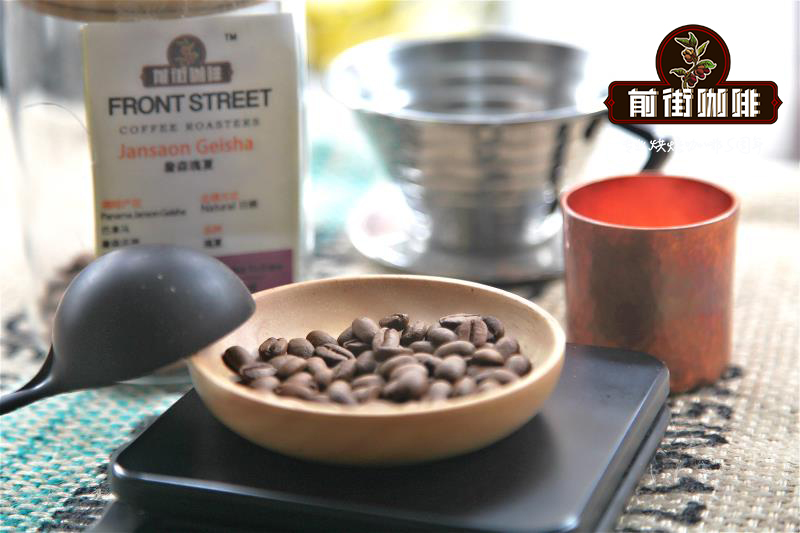Which are the three major producing areas of coffee beans? what is the effect of Arabica coffee beans?

Professional coffee knowledge exchange more coffee bean information please follow the coffee workshop (Wechat official account cafe_style)
Most of the places of production are located between the Tropic of Cancer, that is, 25 degrees north of the tropical or subtropical equator and 30 degrees south of the equator. at present, coffee is mainly produced in more than 70 countries, most of which are located at an altitude of 300-400 meters. Coffee trees grow around the equator. Latin America accounts for about 60 per cent of the world's coffee production, Africa and Arabia account for about 20 per cent, and the remaining 20 per cent are distributed in Asian countries and islands.
Latin America
Balanced, moderately sour and mellow
The overall flavor of Latin American coffee is famous for its balance, and all the flavors in the coffee can be found in Latin American coffee. The widespread use of wet treatment of raw beans is also one of the characteristics of Latin American coffee, good processing also makes its beans larger and more uniform than African coffee, and the defect rate is lower.
Representatives: Colombian Coffee, Salvadoran Coffee, Panama Coffee
African coffee
Charming fruit acid
African coffee is generally characterized by strong aroma and charming acidity, its sour brightness is lively and exhilarating, but African coffee is often slightly thin and not very sweet. African coffee due to drought and lack of water, mostly use the sun method to deal with raw beans, the bean shape is often uneven and beautiful, and the defect rate is high.
Representatives: Kenyan coffee, Ethiopian coffee
Asian coffee
Deep flavor and strong taste
The raw coffee beans in Asia are generally processed by wet or semi-wet process. most of the raw beans are uniform, but the color of the beans treated by semi-wet method is darker. Asian coffee is generally characterized by thick flavor, strong sweetness and round taste, but slightly flat aroma and brightness.
Representatives: Sumatra Mantenin, Java Mantenin, Balinese Coffee
In order to match the characteristics of coffee itself, the goal of roasting is to adapt measures to bean conditions and highlight the characteristics of these coffee itself. In tasting beans, although we divide our products into light (light roasting), roman (medium roasting) and bold (medium roasting) according to the baking degree and taste mode, the specific coffee varieties switch from continent to continent on a monthly basis.
END
Important Notice :
前街咖啡 FrontStreet Coffee has moved to new addredd:
FrontStreet Coffee Address: 315,Donghua East Road,GuangZhou
Tel:020 38364473
- Prev

What are the flavor characteristics of robusta beans? where are the main producing areas of robusta coffee beans?
Professional coffee knowledge exchange more coffee bean information Please pay attention to the coffee workshop (Wechat official account cafe_style) although there are many kinds of coffee available on the market, different producing areas and plantations will produce coffee with different tastes, but generally speaking, there are only two main choices: Robes.
- Next

Where are the main coffee producing areas in the world | introduction to the distribution map of coffee belt in coffee bean producing areas
Professional coffee knowledge exchange more coffee bean information please follow the coffee workshop (Wechat official account cafe_style) 1, Asia 1. Indonesia (Indonesia) famous representative coffee: Java (Java), Sumatra Manning (SumatraMandheling)
Related
- Beginners will see the "Coffee pull flower" guide!
- What is the difference between ice blog purified milk and ordinary milk coffee?
- Why is the Philippines the largest producer of crops in Liberia?
- For coffee extraction, should the fine powder be retained?
- How does extracted espresso fill pressed powder? How much strength does it take to press the powder?
- How to make jasmine cold extract coffee? Is the jasmine + latte good?
- Will this little toy really make the coffee taste better? How does Lily Drip affect coffee extraction?
- Will the action of slapping the filter cup also affect coffee extraction?
- What's the difference between powder-to-water ratio and powder-to-liquid ratio?
- What is the Ethiopian local species? What does it have to do with Heirloom native species?

